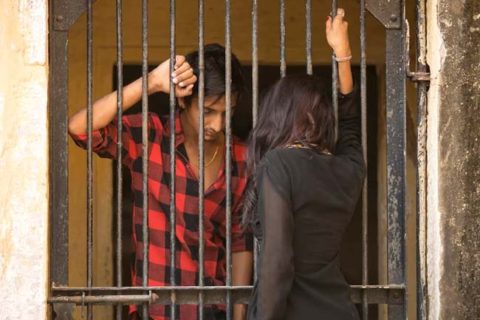People imagine that jail is a bad place and of course no one wants to get into it. Being an inmate is hard because they have to stay in a small room with walls and iron bars and they live there with a lot of restrictions. However, what can inmates expect in Singapore jail? Let’s find out about jails in Singapore according to CNA Insider in the documentary about prisons in Cluster B Singapore Prison Service.
Condition of Prisons
There was a skateboarder who became an inmate in Singapore. He was 31 years old. His offences were extortion, blackmail, and voluntarily causing hurt. He was sentenced for 2 years 5 months and 2 strokes. He was released in October 2022. According to him, he was placed in a one-man cell alone. When he was there, he felt lonely and actually he wanted to talk with someone, but he was stuck.

Jim Ang, an officer-in-charge housing unit in Cluster B Singapore Prison Service explained that B1 is the maximum-security institution and it also houses inmates who get very long sentences, inmates who are getting violence intervention programmes. He said that they do not want any unnecessary conflicts, so they house the inmates in a single man cell.
Rockey Francisco Junior, director, operations, said that their prisons have to be spartan, but not affront to human dignity. He also said that the prisons are simple and the conditions have to facilitate rehabilitation.
Each cell is small, as explained earlier that it is only a one-man cell, and there is a washroom in it. A prisoner said that inside the cell was very hot. In the cell, he had some stuff such as Bible, some books, and some other stuff. He slept on the floor. The light was turned on at 6 am.
Muhammad Shalih Bin Mahli, a senior personal supervisor, said that B1 is one of the maximum-security prisons where they hold about 500 plus inmates. He also said that the cells in B1 are special which means that they are all single man cells. In other places, there are three-man cells, four-man cells, and eight-man cells.
The inmate cell door consists of three key items including a viewing panel and two apertures. There is also a section which is perforated where it is aimed to hear and talk to the inmate inside. There is a poster inside the viewing panel where it is the cell layout that inmates have to follow. Inside the cell inmates are given a number of items including soap box, tooth paste, spoon, short tooth brush, transparent drinking mug and cover, transparent pail, straw mat, two blankets, and there is a CCTV in each cell.
Mindfulness Practice and Muster Check
Muhuthan Munusam, a personal supervisor in Cluster B Singapore Prison Service, said that from 7 to 7:15, mindfulness practice is started where music will be played. The aim of it is to improve inmates’ mental health so that it can help inmates manage their anxiety, anger and stress. And then, there is a morning muster check and the inmates are required to stand up with their t-shirt tucked in and greet their officer. Jim Ang explains “Muster check is a process where we account for the inmates’ headcount in our prisons. So, let’s say, for example, if I have 150 inmates in my housing unit, I must make sure I have 150 headcounts accounted for. Not just seeing them, I also need to make sure that they are responding, get his acknowledgement as well to make sure that he is not feeling unwell or anything.”
Food in the Prison
After muster check, inmates’ food ledge will open. However, before breakfast, the staff issues the shaver first and the inmates will shave inside the cell. After 10 minutes, the shaver is collected again. And then, around 7:45, breakfast is issued to the inmates. What is the breakfast menu? The menu is usually four pieces of bread and a mug of tea or coffee. After giving food, the food ledge door will be closed.
At 9:30, staffs in the kitchen prepare for lunch. Vinod S/O Karikala Sozhan, a work programme officer, kitchen operations, said that per day, they have over two meals, lunch and dinner and around 7000-8000 meals prepared for prison officers, volunteers and inmates. The meals are prepared by inmate kitchen workers. When inmate workers work in the kitchen, they will use tools such as knives. Is it safe for them to use it? Of course, it is safe because every tool is chained to the table and staff will monitor them as well.
There are chefs from the Singapore Airport Terminal Services to educate and guide the inmates on how to prepare the meals. The kitchen serves six to eight different diets approved based on the dietitian’s recommendations. As explained by Vinod, there is a normal, non-meat, soft diet which means minced diet, off chilli for people who can’t take spicy food, low purine for people who can’t take things like tofu and low sugar for inmates who have diabetes. Vinod also says that the kitchen will ensure that the daily protein and vegetable nutrition requirement is catered for the inmates. Everyday they have different types of food. For example, for Monday, they have baked chicken, for Tuesday they have fish. The production of food is done on an industrial scale. If the food has been packed, then it will be placed in the food trolley to ensure the food keeps warm until it is given to the inmates. At lunch time at 11.30 am, the food will be put in front of the inmate’s food ledge and then the inmates will get their food.
On Wednesday, their lunch is usually noodles or rice vermicelli and they are also given an apple. An inmate said that the portion is not enough for him and usually meat is not given at lunch. However, at dinner, they have two chicken breasts or fish. He also said that the way the staff give them food is like giving food for pets in a cage.
Routine Cell Search
At 5:00 pm, routine cell search is conducted. Jim Ang says that it is part of the regulations in the prison where they have to do it to make sure that they don’t keep any contraband such as excessive items or any items which are modified. This cell search is conducted every day. If inmates are caught with contraband in the cell, they will be reported and they may lose opportunity in terms of the work programme or lose their out-of-cell activity and their yard activity. If inmates do any offence such as keeping unwanted things inside cells, the inmates will need to put their thumbprint in the Housing Unit Informal Resolution System. It is a platform for recording down the inmate’s wrongdoings. It can record acknowledgement from an inmate who committed some mistakes and it gives them a contract not to do the same mistake within six months. If they do not obey it, they will be liable for higher punishment which is a disciplinary charge.
Jim Ang explains that in prisons there are minor and major charges. Minor charges range from quarrelling with another inmate, disobeying an officer’s instructions or keeping excessive or modified items. If inmates are found guilty of minor charges, the punishment may range from a written warning, confinement in the punishment cell up to seven days or extending his release date. Major charges that are done by inmates can impose them to have caning punishment and if the case is serious, it may be able to be referred to the police. Major charges range from fighting with other inmates, hoarding of medication and tattooing in prison. Plastic, stapler, strings, pencils and A4 paper are not allowed in the cell.
When Inmates Get Caned
If inmates need to get caned because of the mistakes that they did, they will do that and after that the inmates will be cared for by a doctor. As explained by dr. Lee Guo Rui, prison medical officer, the wounds are linear superficial wounds and abrasions and it will not be profusely bleeding. He said that he considers it a minor wound because there is no deep tissue cut. If the inmates request painkillers, the doctor will prescribe for them.
Yard Time for Inmates
At 03:30 to 05:30 pm is yard time where inmates will do exercise in the space which is bigger. Usually, inmates have two hours of yard time, twice a week, where it falls on Tuesday and Thursday.

A bookworm and researcher especially related to law and citizenship education. I spend time every day in front of the internet and the campus library.




